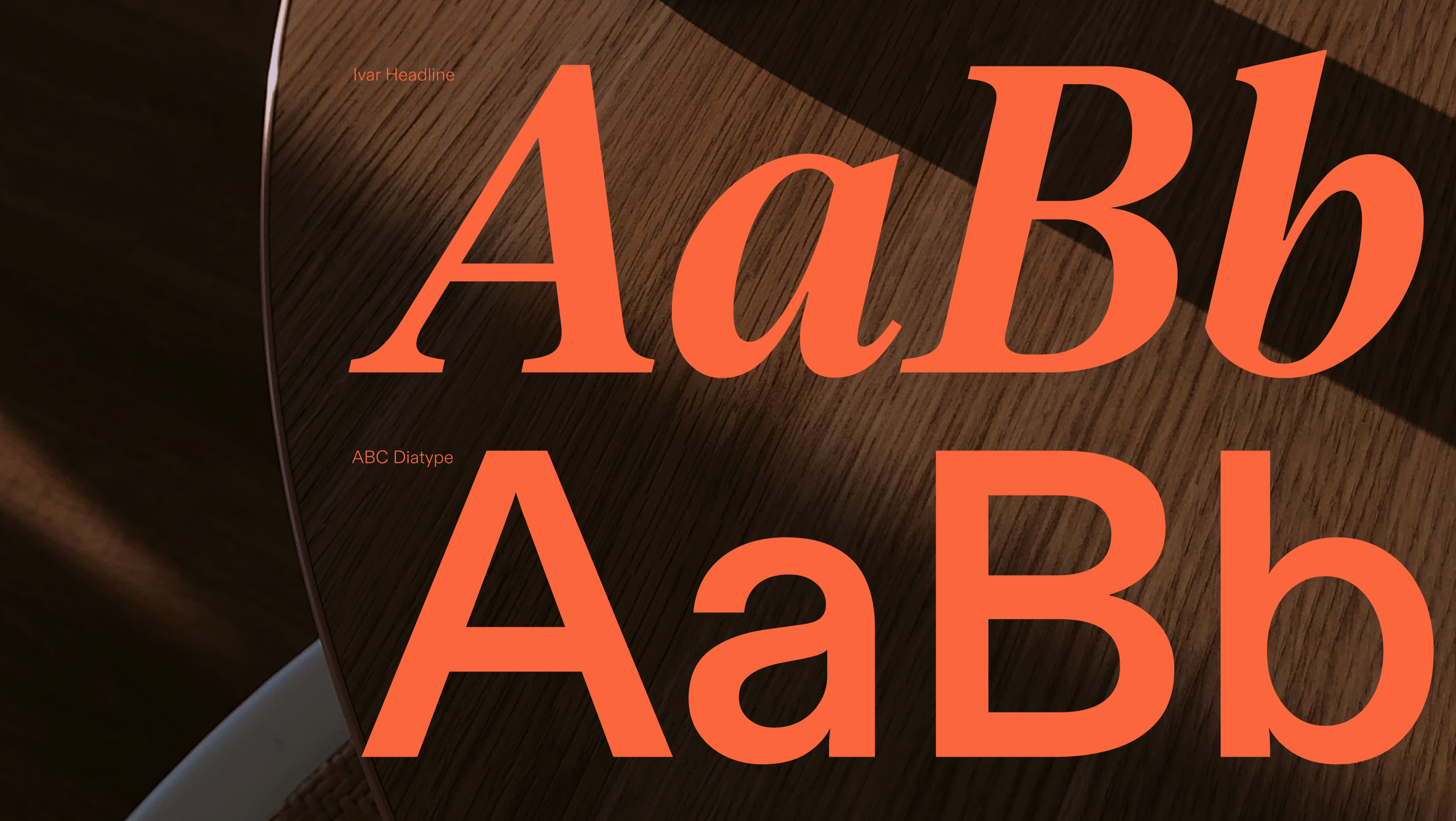Discover how web fonts can boost creativity and elevate your website’s design by enhancing branding, readability, and user experience. Typography has always been a key tool in design, even in early web design strategies. However, its use has evolved significantly over time.
Early web designers were restricted to a few system fonts installed on limited devices, stifling creativity and branding potential. The shift from system fonts to web fonts revolutionized web design, offering more customization with a wide variety of typefaces, including unique display fonts that enhance branding and make a visual impact.
This change allowed designers to create more visually dynamic, brand-aligned websites that enhance user experience. Web fonts also improved readability and accessibility, extending the reach of web pages by making them more visually appealing and easier to understand.
Source: typetype.medium.com
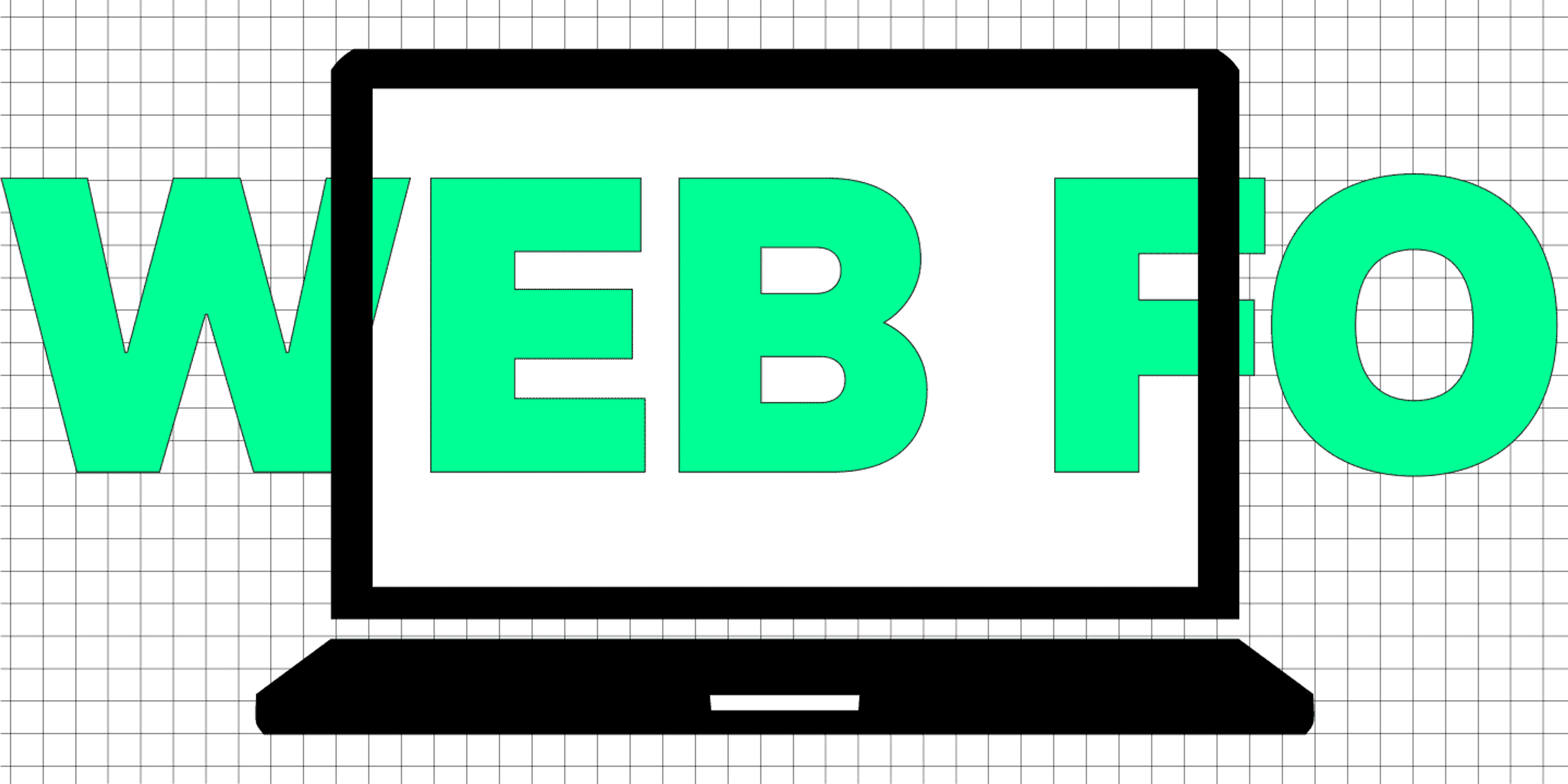
Understanding Web Fonts
Web Fonts: Definition and Technical Overview
Web fonts are different from other fonts, including the popular sans serif typeface known for its clean lines and geometric forms. They are not installed on a user’s device but are temporarily stored on a web server and accessed as needed by a website. This technology allows web designers and developers to develop a broader range of fonts, bringing aesthetic appeal to the site.
Formally speaking, web fonts are realized using font files embedded in the webpage style sheet with the @font-face rule so that the browser can retrieve and utilize the font when needed.
Brief History of Web Fonts
The journey of web fonts is a fascinating tale that dates back to the early days of the internet. In the 1990s, web designers were constrained to a limited selection of system fonts like Arial, Times New Roman, and Courier.
These fonts, known as “web-safe” fonts, were pre-installed on most computers, ensuring consistent display across different devices.
As the web evolved and design sophistication increased, the demand for more diverse and custom text styling grew. Enter the early 2000s, when web fonts began to emerge as a solution to this problem.
Web fonts allowed designers to specify custom fonts that could be downloaded along with the website, providing greater control over the visual aesthetics. Among these, the geometric sans serif font stands out as a versatile and modern choice, suitable for both text and display contexts.
A pivotal moment in the history of web fonts was the introduction of the @font-face rule in CSS. This rule enabled designers to specify custom fonts and have them downloaded with the website, making it possible to use a wide array of fonts on the web. Here you can try the @font-face rule:
Source: www.w3schools.com
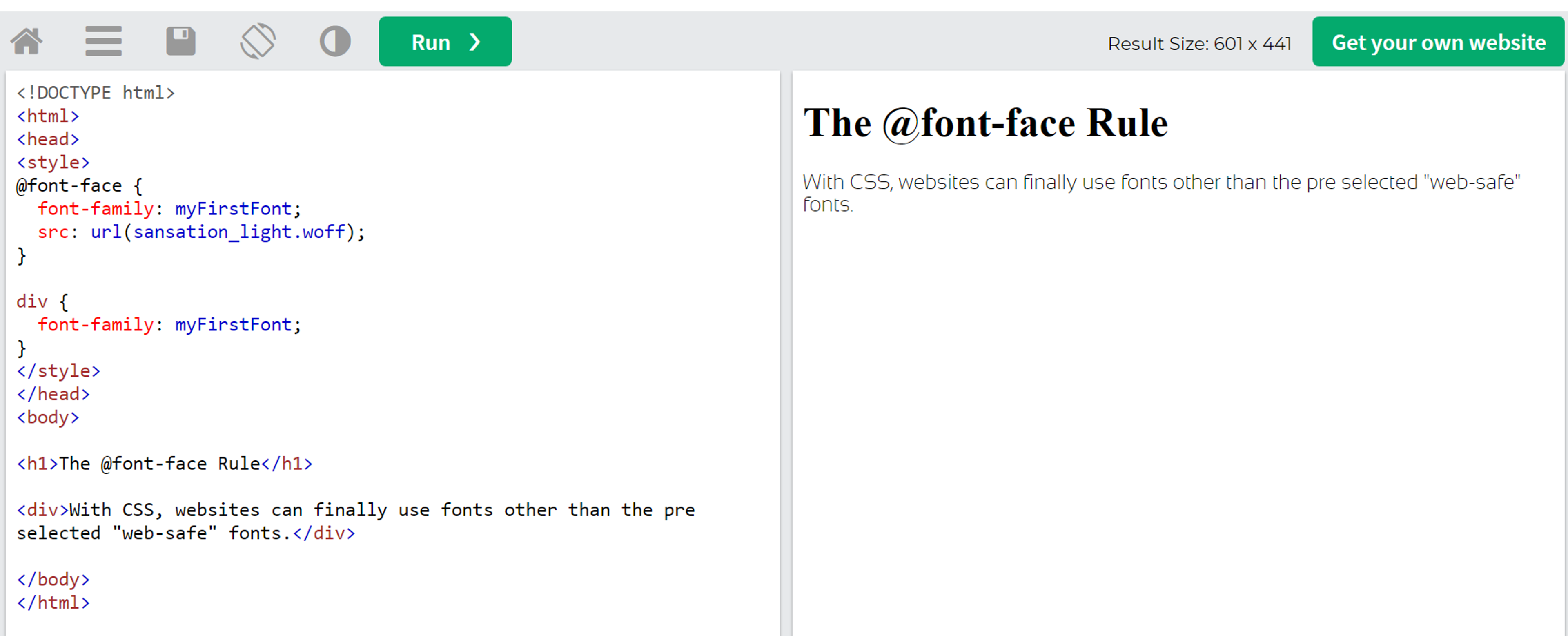
Today, web fonts are an integral part of web design, with thousands of fonts available for use. The rise of online font services like Google Fonts has made it easier than ever to find and incorporate high-quality web fonts into designs, revolutionizing the way we approach typography on the web.
Benefits of Using Web Fonts
Incorporating web fonts into your designs can unlock a multitude of benefits, enhancing both the visual appeal and functionality of your website. Here are some of the most significant advantages:
- Increased Creativity: With thousands of web fonts at your disposal, you have a vast palette to choose from, allowing you to craft unique and visually captivating designs. This variety empowers you to break free from the constraints of default fonts and explore new typographic possibilities. A versatile font can adapt to different design needs, making it suitable for both headings and body text across various mediums.
- Improved Readability: Web fonts can be optimized for screen readability, ensuring that your content is easy to read and comprehend. This is particularly important for maintaining user engagement and delivering a seamless reading experience.
Source: kwebby.com
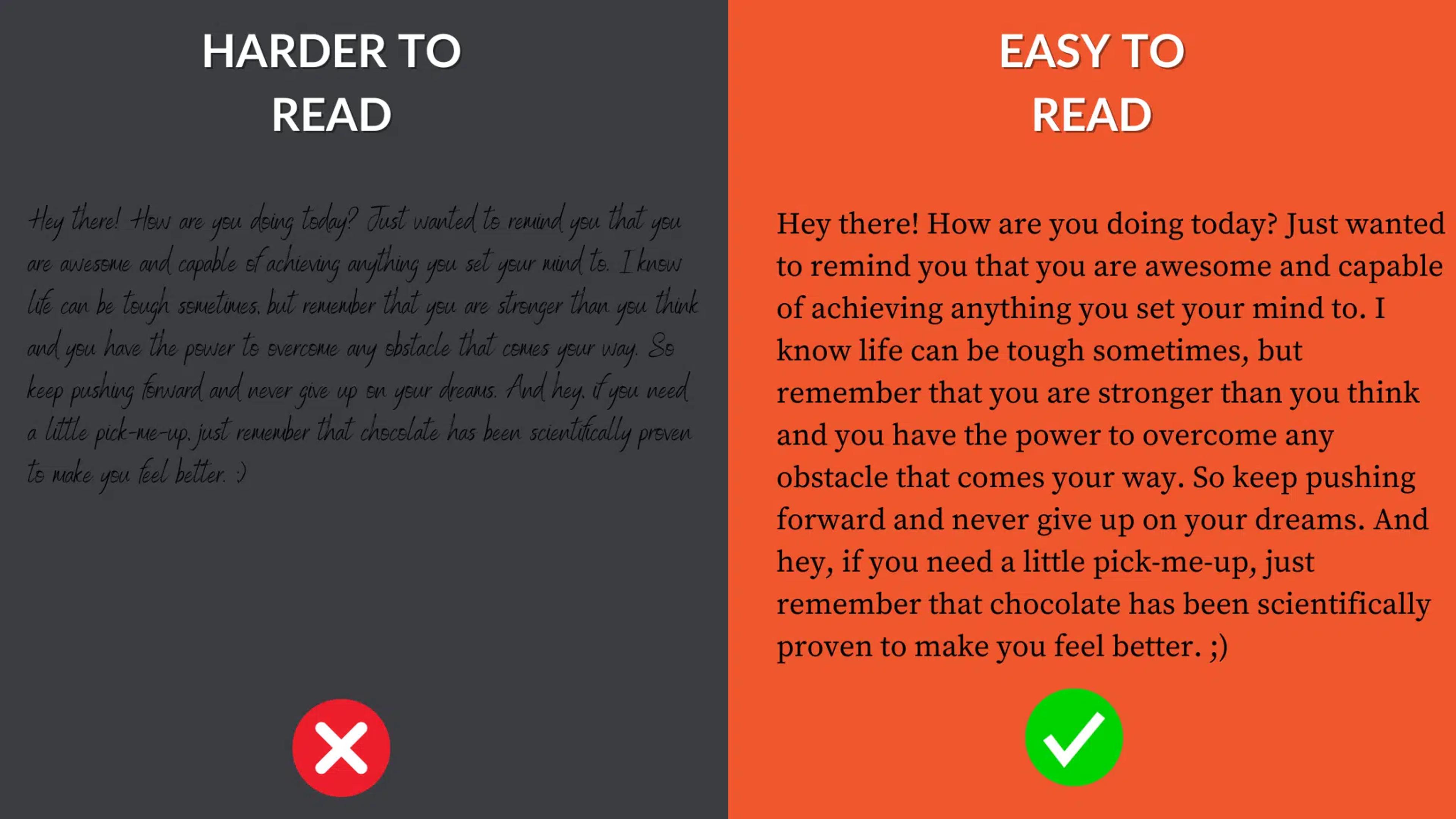
- Consistency: Web fonts ensure that your design looks consistent across different devices and browsers. This uniformity is crucial for maintaining a cohesive visual identity and providing a reliable user experience.
- Branding: Custom web fonts can reinforce your brand identity, creating a consistent visual language across all your marketing materials. By using distinctive fonts, you can make your brand more recognizable and memorable.
- Accessibility: Web fonts can enhance accessibility by providing clear and readable text for users with visual impairments. This inclusivity ensures that your content is accessible to a broader audience, aligning with best practices in web design.
Various Forms of Web Fonts
Self-hosted or Web Fonts
Self-hosted fonts are font files hosted on a website server and presented directly to users. In such a configuration, the designers enjoy complete freedom in choosing the design/type of fonts used on the site and how they will be used, including creating a comprehensive font stack to provide fallback options for enhanced web compatibility and brand consistency, though optimizing the file types and sizes for faster loading times is essential.
Web Font Services
Web font services, such as Google Fonts and Adobe Fonts, offer a wide variety of type styles that can be easily embedded into websites. These services provide end users with hosted fonts, which, in most cases, offer a much more efficient and effective way to provide fonts to a global audience than would otherwise be the case.
Source: fonts.google.com
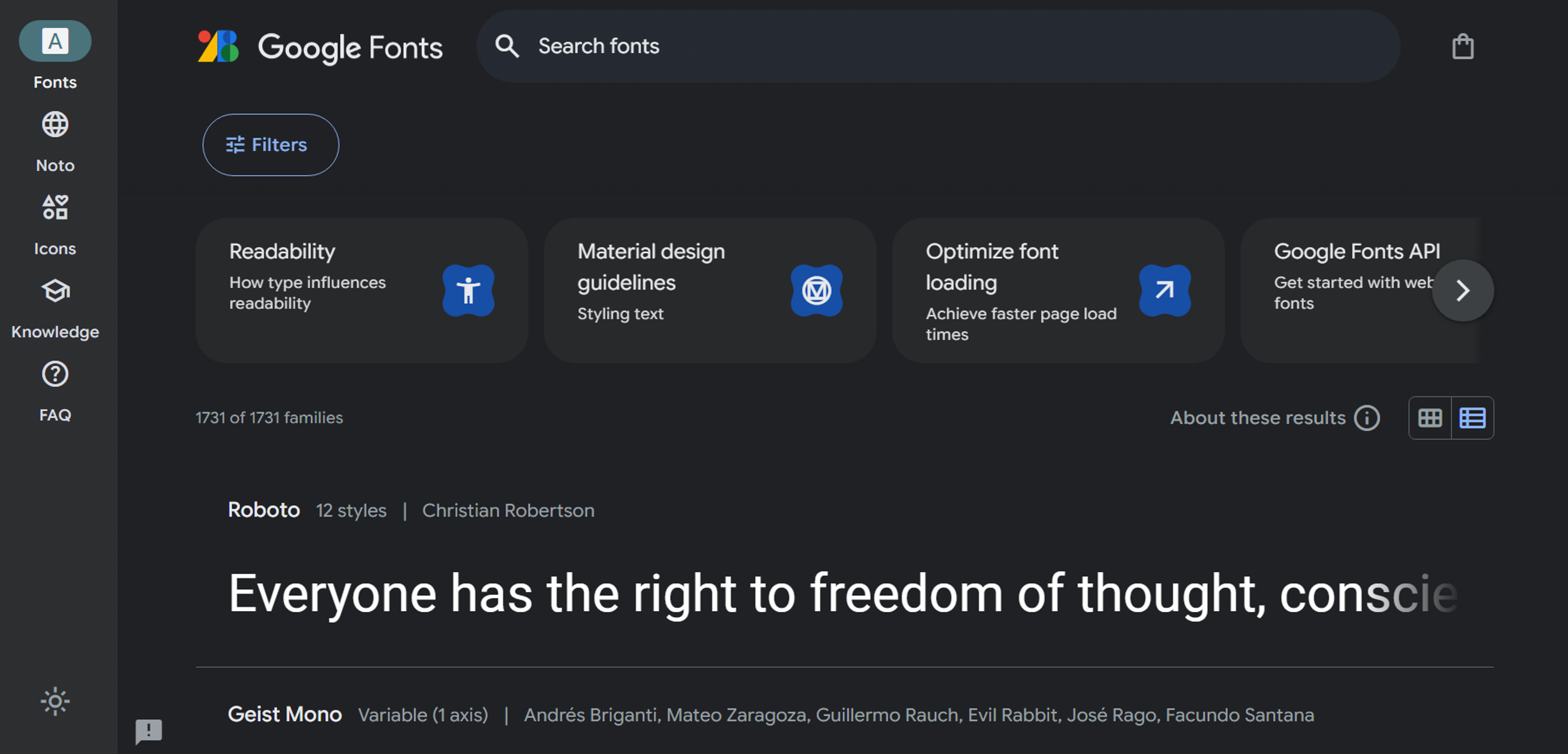
Variable Fonts
The development of variable fonts is an evolution in web design typography because a single font file can represent several different stylized or bolded forms.
This flexibility allows variable fonts to be used as an efficient mode of delivering design changes without the inconvenience of long loading times.
Font Formats
Web fonts are available in different file formats to maintain cross-browser compatibility:
- WOFF (Web Open Font Format): A compact format for the web.
- WOFF2: A compression-optimized version of WOFF providing fast load times.
- TTF (TrueType Font): This format has been around for so long that it still crosses operating system barriers, but it is an enormous final file.
- EOT (Embedded OpenType): Microsoft designed this for earlier Internet Explorer versions.
Using any of these formats is critical for developing decent picture quality while maximizing page speed. Additionally, implementing font stacks ensures that web fonts display consistently across different browsers and devices.
Good Fonts for Websites
Choosing the right font for your website is essential for enhancing aesthetics and readability, creating a great user experience. The right typography can set the tone and make your site look more professional.
Inter
Inter is a modern, versatile sans serif font designed by Rasmus Andersson, a former Figma designer. Tailored specifically for user interfaces and screens, this free, open-source typeface is trusted by industry leaders like GitHub and Mozilla.
As a variable font family, Inter offers exceptional flexibility, allowing precise control over styles and weights. Its advanced OpenType features, including contextual alternates and tabular numbers, ensure enhanced readability across diverse applications, making it a go-to choice for digital design.
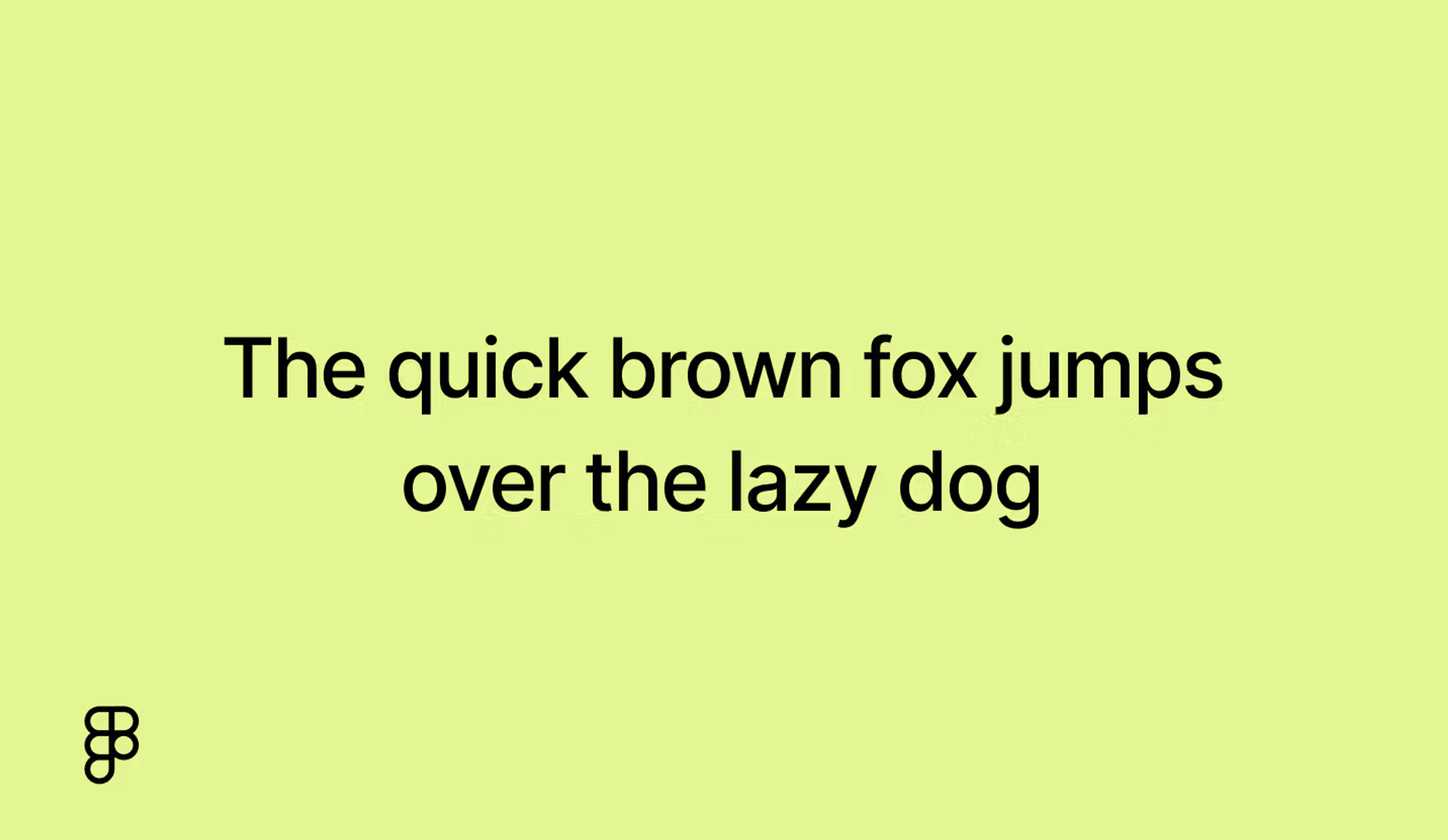
Roboto (+ Condensed and Slab)
Sans serif Roboto has become a top choice among web designers, thanks to its versatility, readability, and clean, modern design. Originally developed by Google, it has been widely adopted for its ability to adapt seamlessly to various design styles and digital interfaces.
Its Condensed and Slab variations have also gained significant popularity, offering additional flexibility for different design needs. These features have made Roboto a go-to font for Webflow users in recent years, helping creators craft polished and professional-looking websites with ease.
Source: webflow
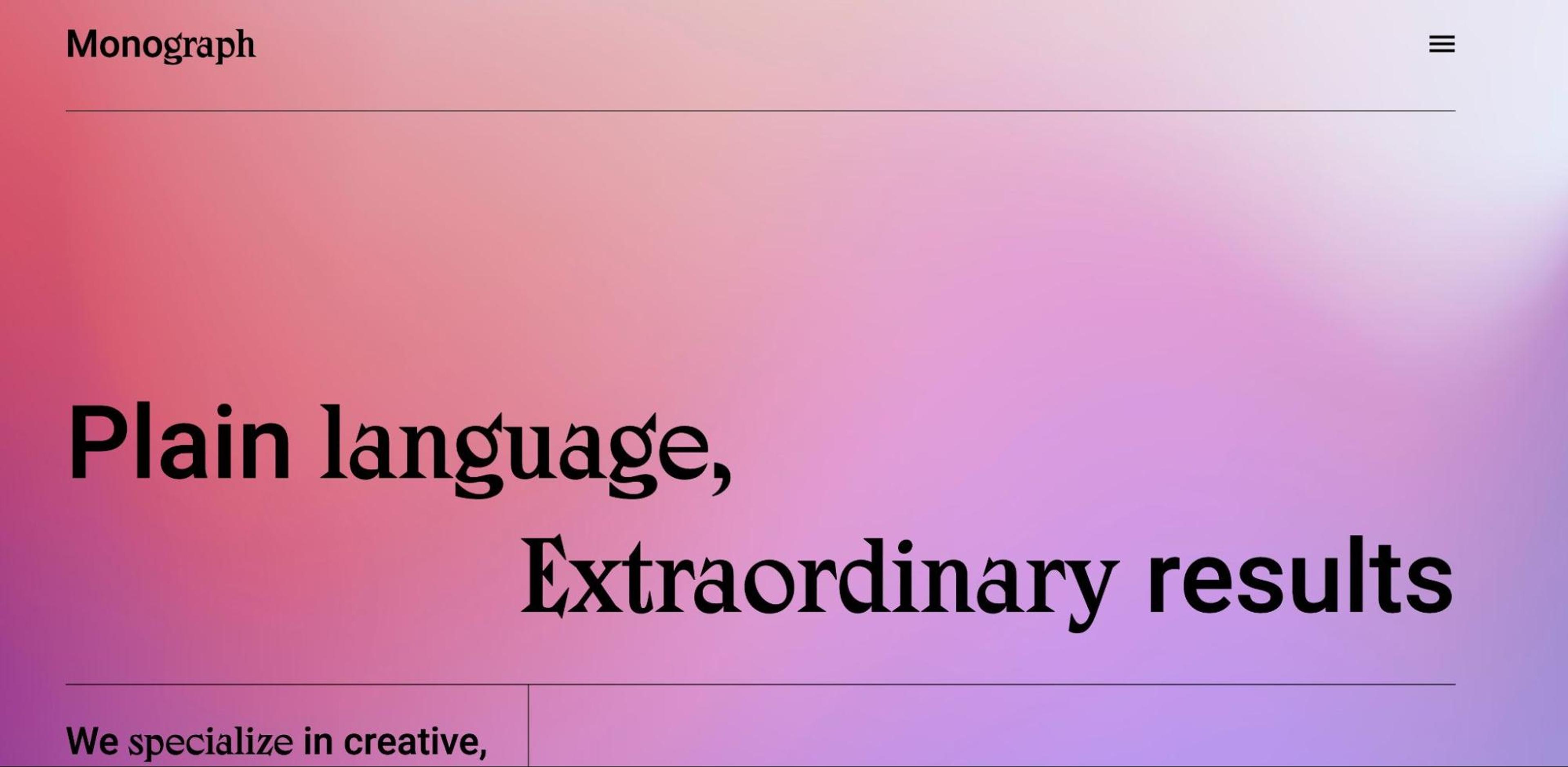
Neue Metana Font
Neue Metana is a sleek, minimalist typeface that redefines modern design with its geometric structure, alternative characters, and unique ligatures. Drawing inspiration from urban culture and contemporary lifestyle trends, this font effortlessly adapts to any project, whether you need a light, delicate look or bold, striking impact.
Crafted through a collaboration between Aulia Rahman, Jeje Yuhardi, and Wildya Balqis, Neue Metana brings versatility and character to websites and designs alike, making it the perfect blend of style and sophistication for any creative endeavor.
Source: wegic.ai
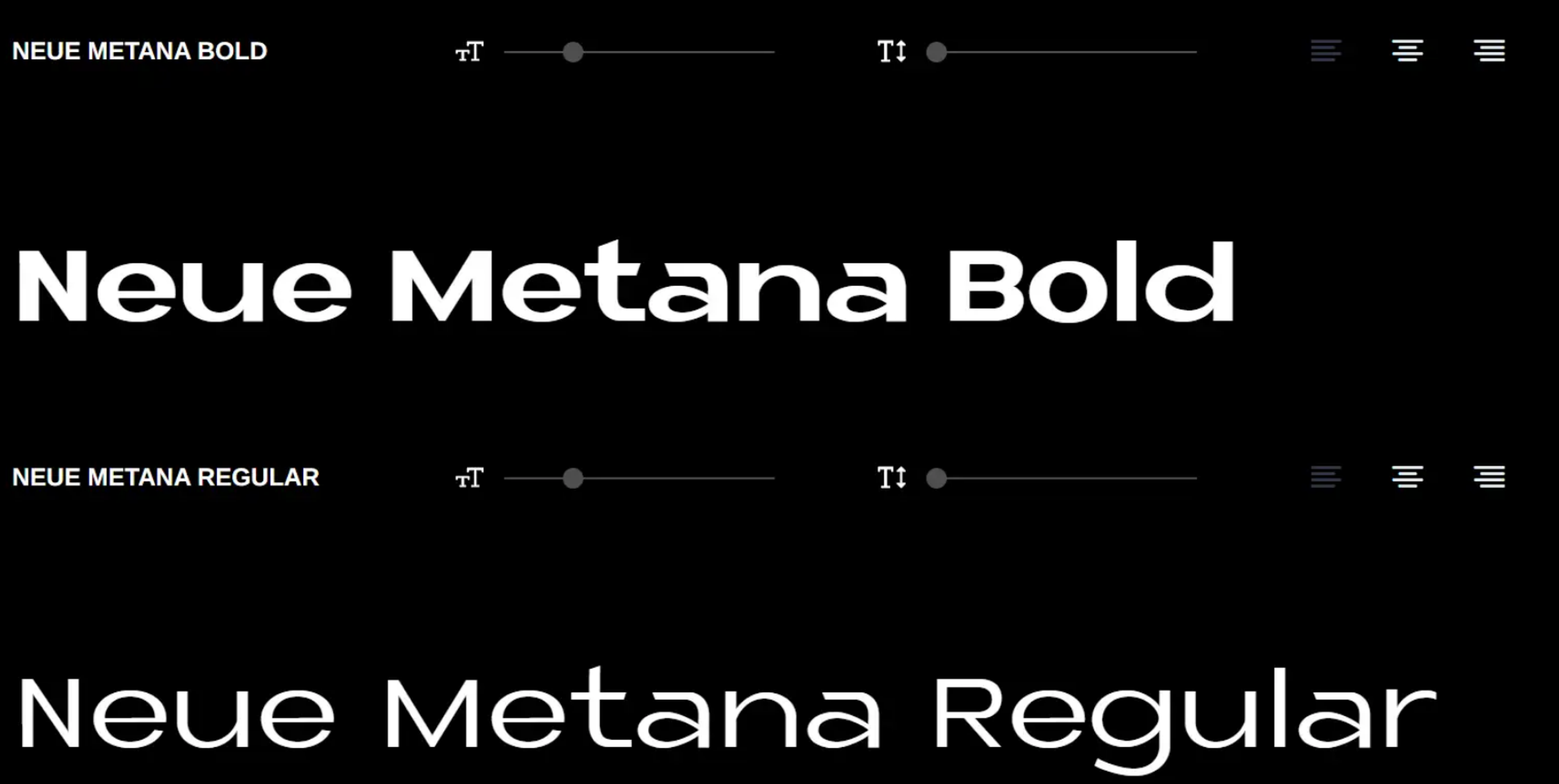
Migha Font
Migha, a free variable font by Seniors Studio, combines modern and retro styles, making it a flexible option for web design. This display font family includes six weights, four widths, and various stylistic features, totaling 96 font files.
Script fonts, which mimic handwriting styles, are another category of display fonts often used for titles rather than body text due to readability concerns. They play a significant role in web design by enhancing brand identity and visual impact.
It’s perfect for a variety of uses, including branding, magazines, posters, and logos, and offers a complete set of uppercase letters, numbers, punctuation, and multilingual support. With its wide range of styles, Migha is one of the most adaptable fonts for websites, ideal for any project that needs a unique, standout design.
Source: wegic.ai
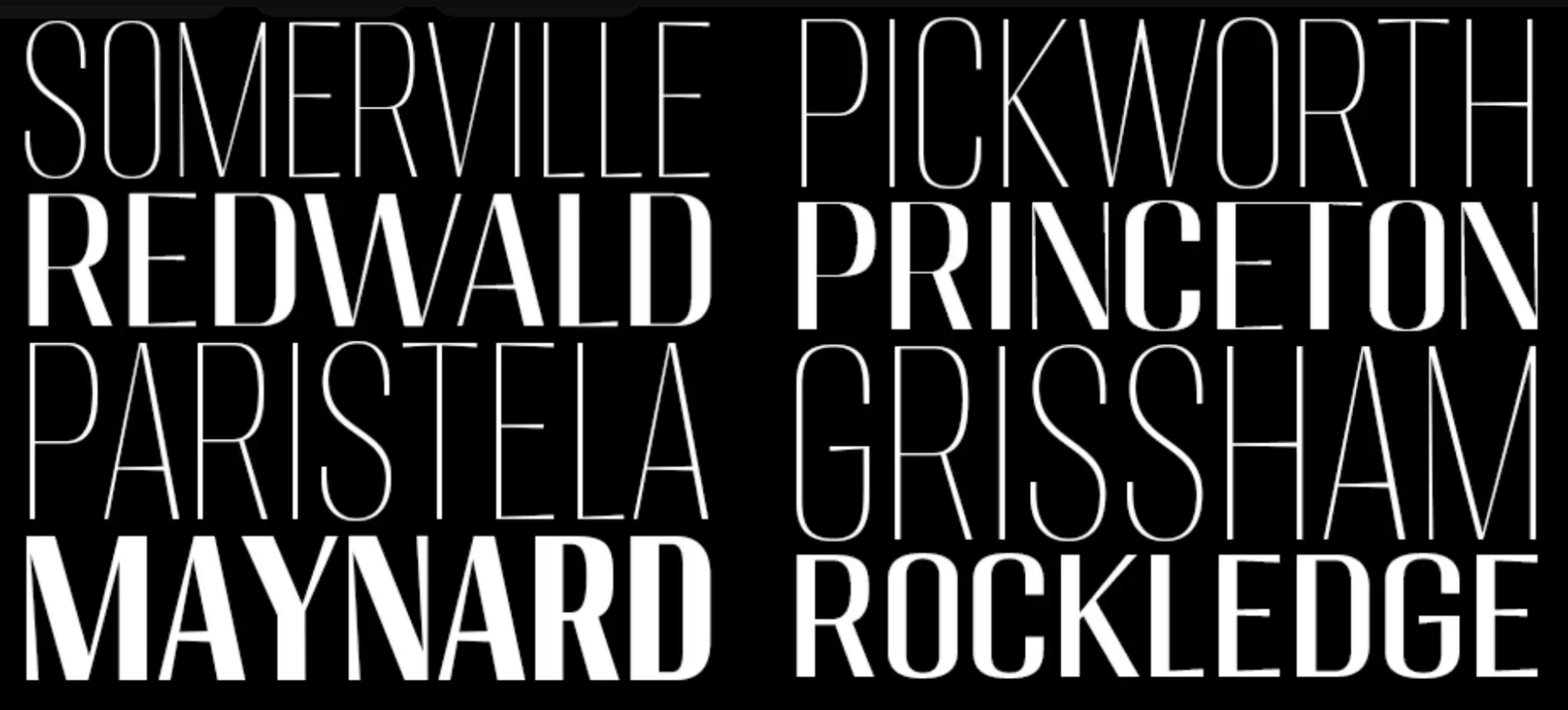
Josefin Slab
Josefin Slab is a modern slab serif font that offers a clean and elegant design with a touch of retro charm. It’s part of the larger Josefin family, which is known for its geometric and stylish look. Josefin Slab stands out with its sharp, strong lines and balanced proportions, making it perfect for both headlines and body text.
The font’s versatility makes it suitable for a variety of design projects, from editorial layouts and websites to branding and posters. Its distinctive, yet readable design ensures it can deliver both sophistication and clarity, making it a popular choice for projects aiming for a refined, timeless aesthetic.
Source: designyourway.net
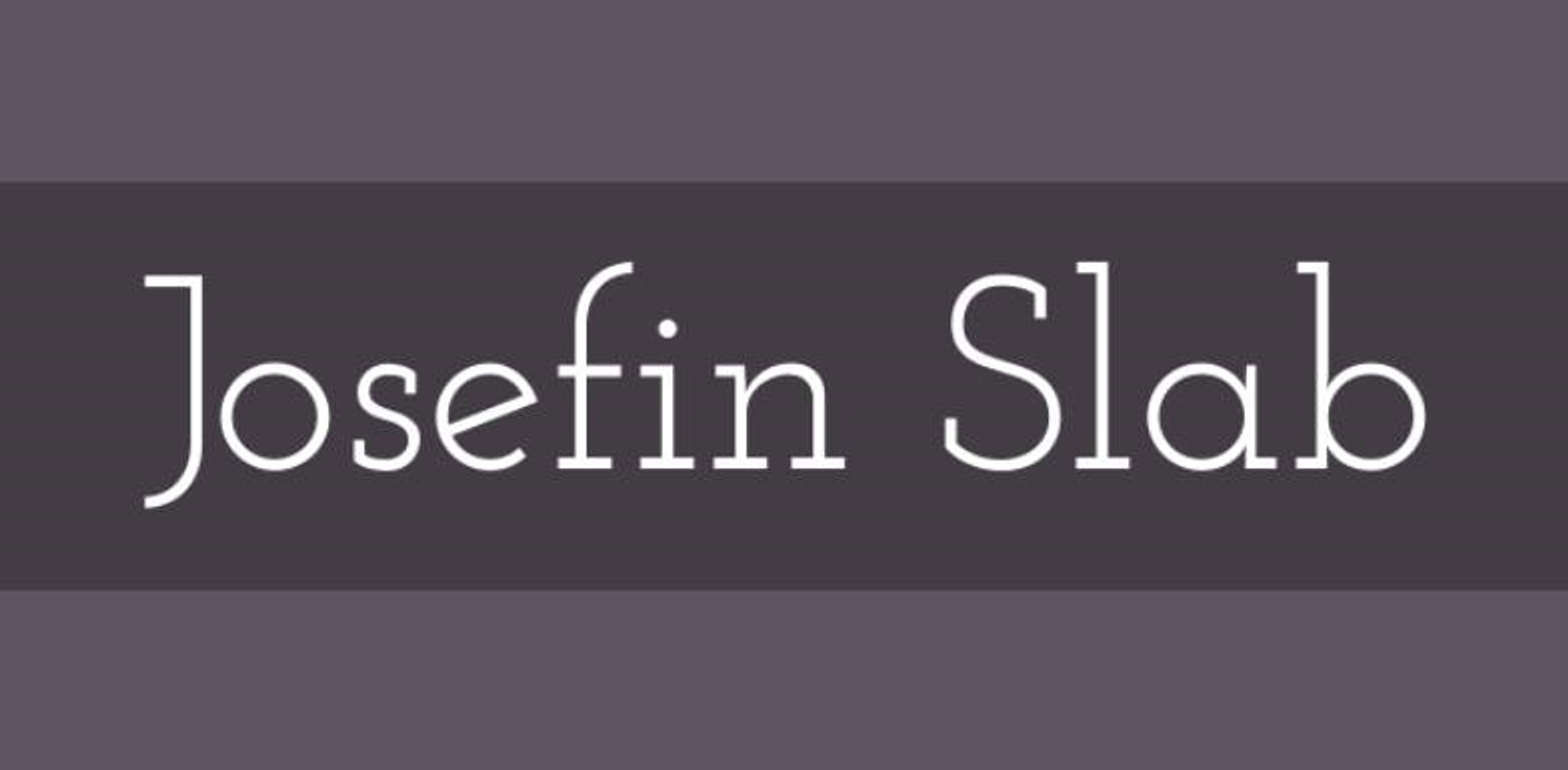
Best Practices for Web Font Implementation
When implementing web fonts, it is critical to include strategic approaches to avoid compromising performance, accessibility, and user experience. The following recommendations can help:
Performance Optimization
One of the most critical factors in streamlining performance is the efficiency of font-loading strategies. Asynchronous techniques allow text to be displayed before fonts finish loading. Another font-loading strategy that needs careful consideration is Font Display Swap (FOUT and FOIT).
Source: fonts.google.com
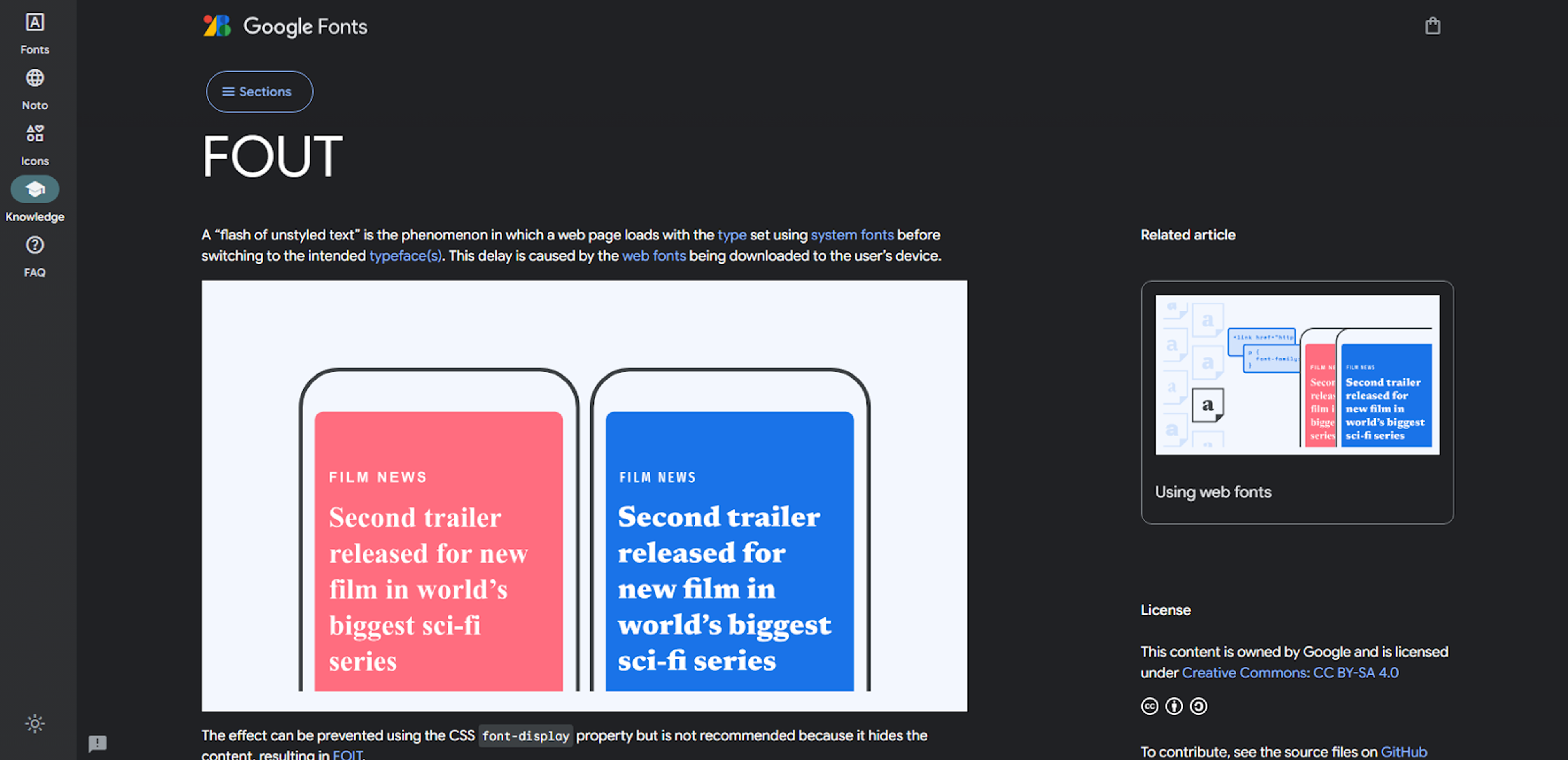
Subsetting and compression are other vital practices. Subsetting lowers the size of a font file, containing only the characters people need to see on the page, which improves loading times.
Using the WOFF2 compression format or other formats that offer higher compression rates without compromising quality is encouraged.
Font Pairing Principles
The choice of complementary fonts also contributes to the aesthetics and structure of the message. A known method is to use one font in serif and another in sans-serif style to solve the problem and keep balance. A sans serif typeface designed for versatility, such as Helvetica, can pair well with a serif font to create a harmonious and functional design.
For instance, an elegant serif font like Georgia is highly readable across various sizes, making it ideal for mobile-responsive design, blogs, and body copy.
Keeping the use of typefaces to only two or three can help minimize distraction and make it easier to develop a cohesive design language. All combinations and alterations must be previewed before use, as text might not be able to have the required impact.
Accessibility Considerations
Font accessibility on the web means caring for the visually impaired or dyslexic people. Good choices in this respect include those who suffer from jaw strains or people with dyslexia: sans-serif fonts with consistently formed otherwise letter types.
This means that users with partial vision should have no problem reading text that meets the Web Content Accessibility Guidelines (WCAG). Moreover, font size should be adjustable with text size without breaking the layout.
Source: www.wcag.com
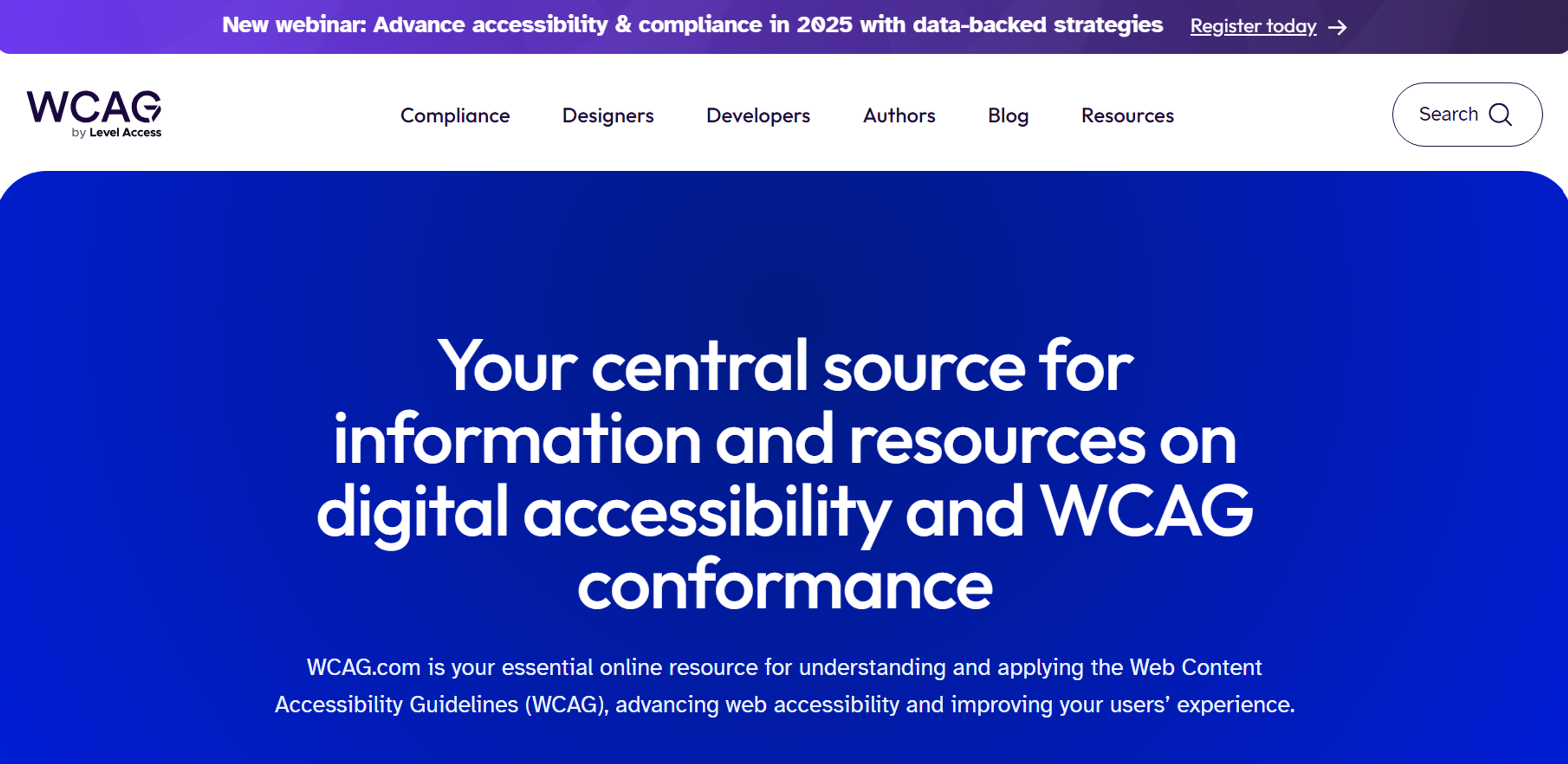
Applying these best practices allows designers and developers to successfully embed web fonts into a website for both aesthetic and functional purposes.
Popular Web Font Services
Several services are available for embedding web fonts, and designers and developers can utilize them. Below are some of the major sellers and their merits and demerits.
Google Fonts
Google Fonts is one of the most popular free web font services that can help you get thousands of font families. Clients can quickly use the service by making straightforward fonts for their website owners.
However, when it comes to picking fonts, many have to choose from the more popular ones, and some designers may also use other types of fonts.
Adobe Fonts
Adobe Fonts, also known as Typekit, provides Adobe Creative Cloud Subscribers with a rich gallery of high-quality fonts. It has great features that allow it to be easily integrated within Adobe software and superb typographical control.
Even though the fonts available at Adobe Fonts are quite diverse in many aspects, they are also enclosed within a subscription. This may also be a downside for designers working on low budgets.
Source: fonts.adobe.com
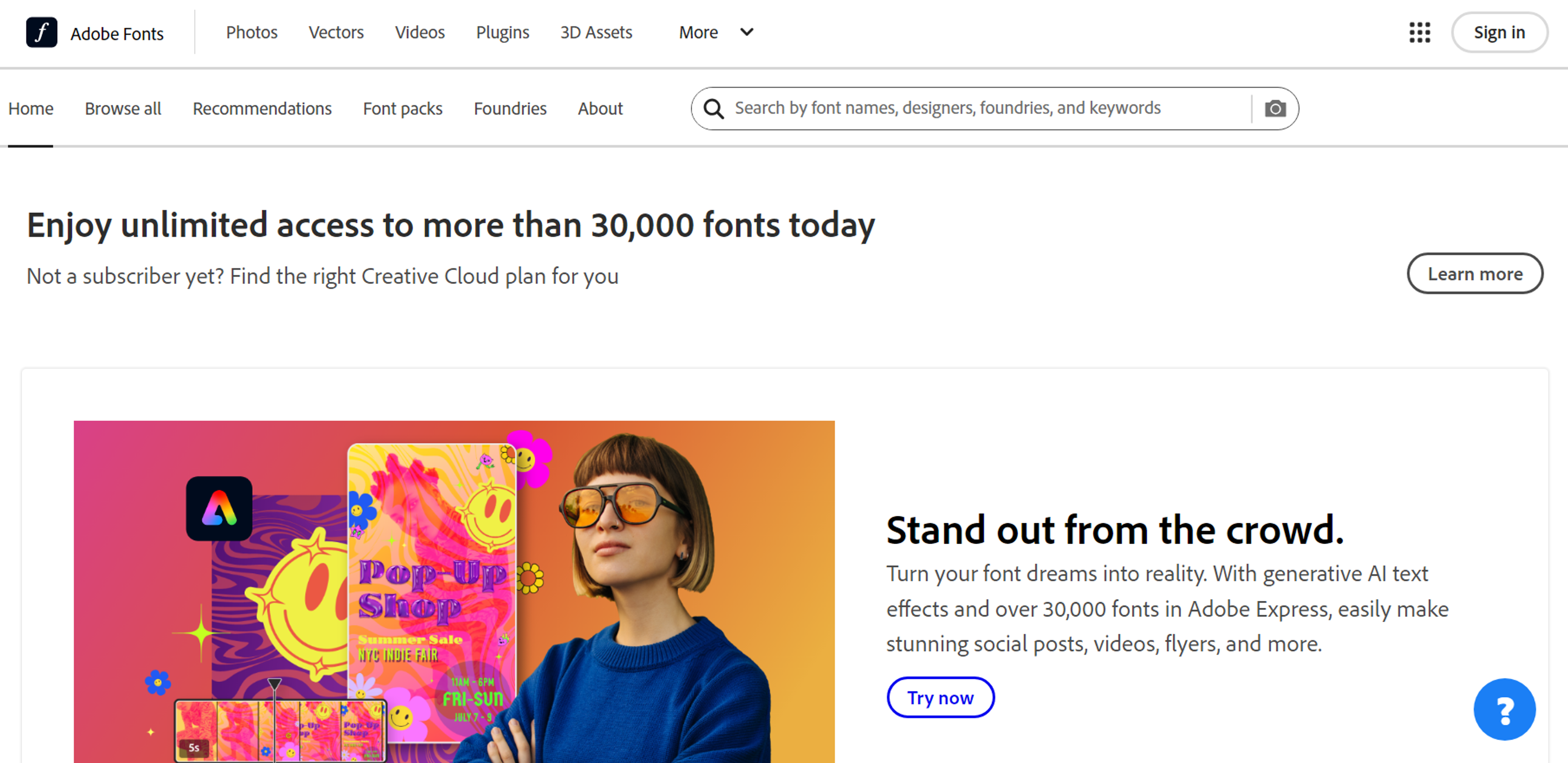
Custom Font Hosting Services
Custom font hosting services assist designers in uploading their fonts on their servers, as they have control permission on the font files. This option often attracts domain owners who wish to have a proprietary typeface or optimize their pages' performance for specific requirements. However, dealing with font licenses and adherence to web standards may burden the project.
Pros and Cons of Each Service:
- Google Fonts: The pros include a reasonable price and a simple interface, while Strike Out's number of fonts is not outstanding.
- Adobe Fonts: The pros include a vast collection and integration with the Adobe suite; the only significant con is the price.
- Custom Hosting: Pros are customization and control, whereas cons include greater complexity and licensing management.
Common Pitfalls and Solutions
Adopting web fonts in a project may present challenges that may impact the user experience, performance, and legality of the project. We discuss some of these issues and their solutions.
Licensing Risks
Adequate licensing needs to be sought when using web fonts or website fonts to avoid legal issues. Ensure that the fonts you use in your projects are licensed for use on the Internet.
It is even better to use reputable platforms offering fonts, such as Google, as they have clear licensing terms. If custom licenses are used to oversee them carefully, you will avoid such legal issues.
Source: kdesign.co
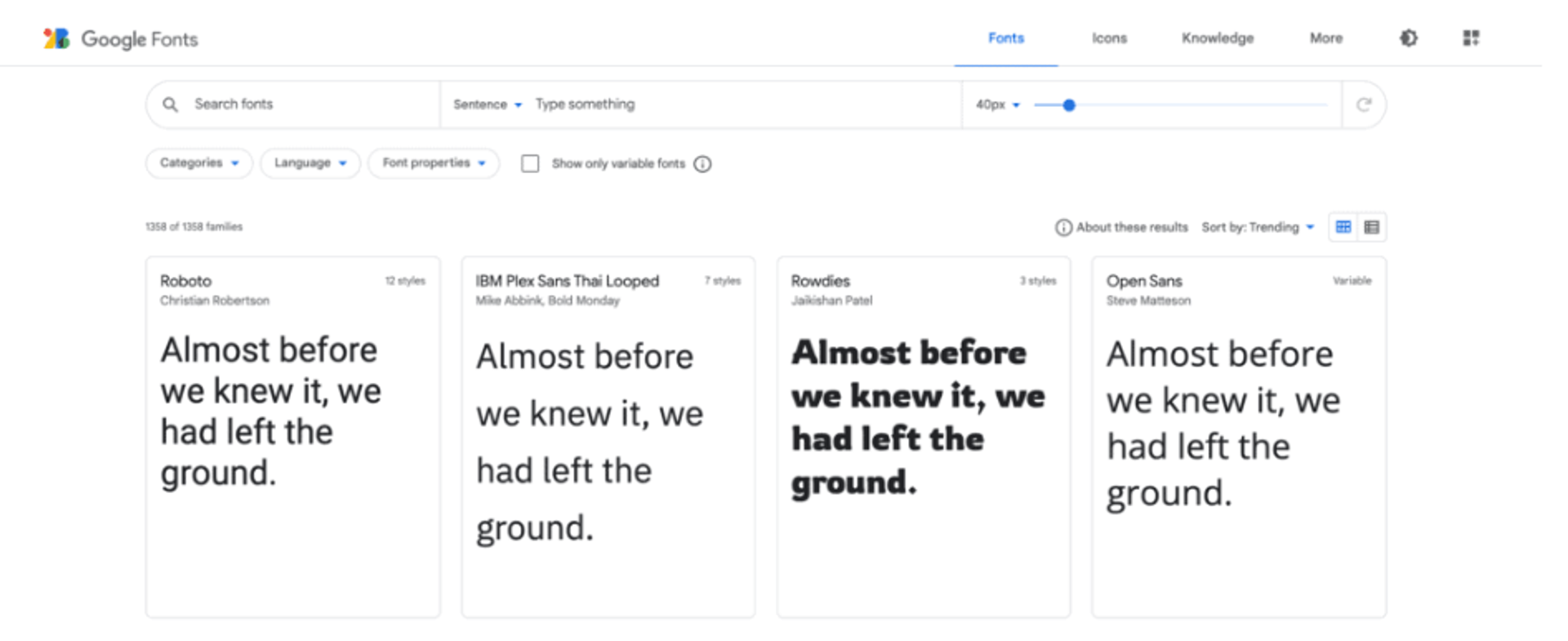
Cross-Browser Compatibility
In several instances, the site’s font may differ in appearance according to the browser one is using, thus creating design problems. Make it a point to check your site on all the popular browsers so that any font rendering issues are fixed. Using CSS resets and making sure that only font formats that are widely used will be able to help keep the look consistent.
International Character Support
A wide character set is absolutely necessary for websites wishing to be seen by a global audience. Chosen fonts should be able to include the required language sets, special characters, and scripts.
Google Fonts and Adobe Fonts usually provide a large font collection with a good number of languages, useful for internationalization.
Many of these types of mistakes can be avoided by relatively simple but thought-through design techniques. These techniques will allow web designers and developers focused on typography to achieve more consistent, fast, and efficient results on their web projects.
Future of Web Typography
Variable fonts are a major innovation, allowing a single font file to contain multiple versions, like weight, slant, or width. This enables designers to create complex typography while minimizing page load times. Colored fonts are another development, offering characters with colors and textures to create vivid, unique styles.
Machine learning is also being applied to typography, enabling font suggestions and self-adjustments to improve legibility and usability. As these technologies evolve, web typography will become more personalized and adaptable.
Read more:
Conclusion
In web typography, staying updated on trends and developments is essential for designers and developers. Variable fonts are efficient and flexible, while color fonts offer greater visual impact.
Machine learning and new technologies can enhance user experience and accessibility. Best practices include using responsive typography, supporting international character sets, and optimizing font rendering for faster loading.


About Clay
Clay is a UI/UX design & branding agency in San Francisco. We team up with startups and leading brands to create transformative digital experience. Clients: Facebook, Slack, Google, Amazon, Credit Karma, Zenefits, etc.
Learn more

About Clay
Clay is a UI/UX design & branding agency in San Francisco. We team up with startups and leading brands to create transformative digital experience. Clients: Facebook, Slack, Google, Amazon, Credit Karma, Zenefits, etc.
Learn more